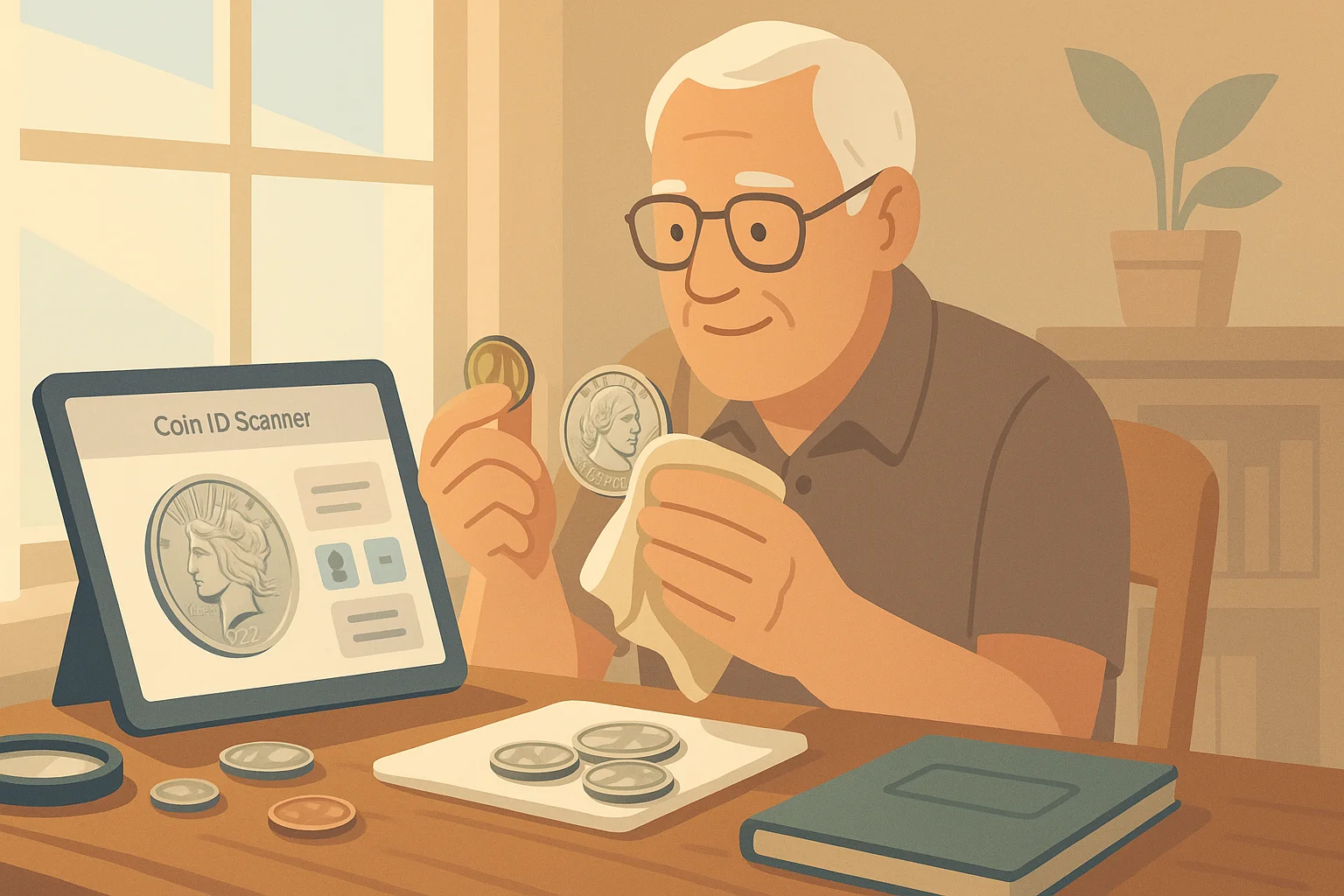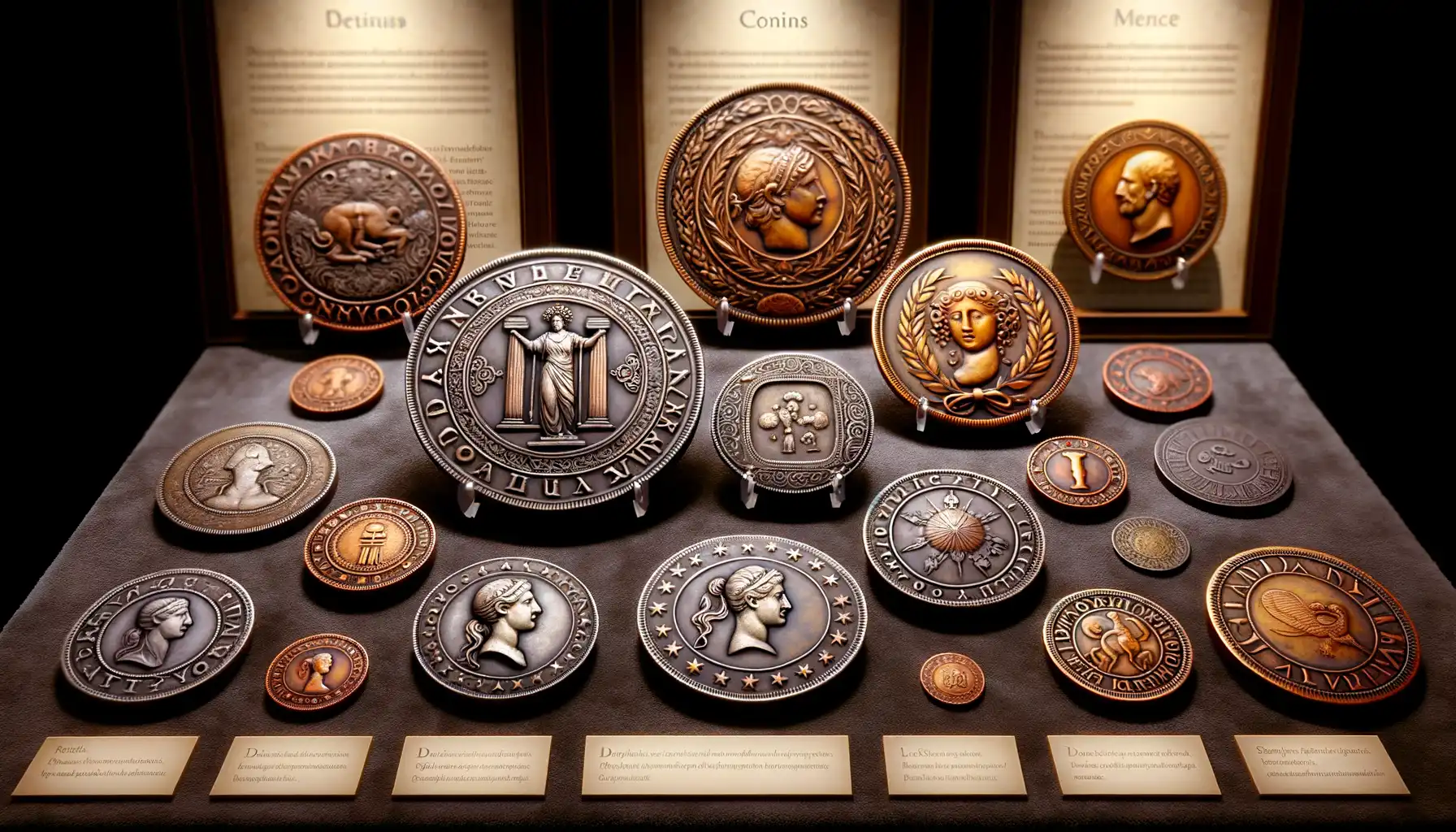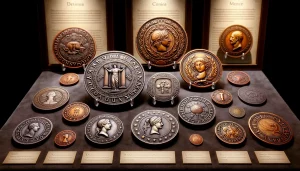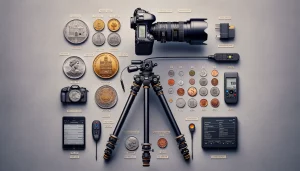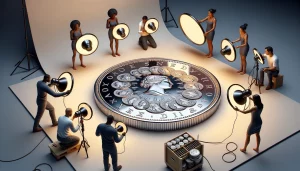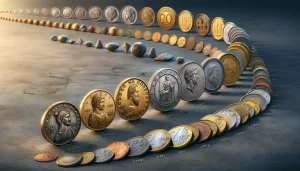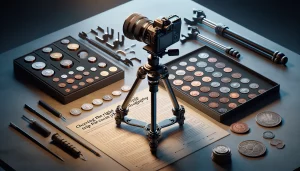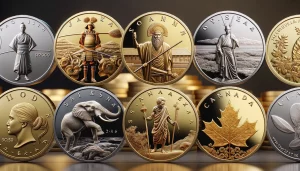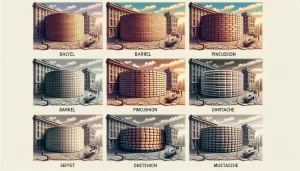Introduction to Coin Authentication and Photography
Why Coin Authentication Matters More Than Ever
In the dazzling world of coin collecting, there’s more at stake than meets the eye. When you hold a coin in your hand, you’re holding history—a story etched in metal. But what happens when that story gets clouded by counterfeits? Enter the world of coin authentication, where every scratch, edge, and patina plays a role in determining the truth of a coin’s origin.
This is where photography steps in as the unsung hero. High-resolution images are like magnifying glasses turned up to eleven, revealing every groove and imperfection with breathtaking clarity. Whether it’s identifying a rare mint error or spotting a too-good-to-be-true replica, photography has revolutionized how collectors validate their finds. Think of it as having an eagle-eyed companion—one that never misses even the tiniest detail.
The Magic of Capturing Every Detail
When it comes to authenticity, the devil really is in the details. Here’s why the right photo can make all the difference:
- It highlights subtle elements like die cracks, tool marks, or luster that escape the naked eye.
- Through lighting and angles, it uncovers inconsistencies in font styles or missing design elements.
- And most importantly, it creates a visual record—your proof against disputes down the road.
Taking the ‘perfect shot’ is not about flashy equipment but knowing how to bring out each coin’s unique fingerprint. A 19th-century silver dollar, for example, has a shimmer that modern reproductions simply can’t replicate. With the right photograph, you won’t just see the difference—you’ll feel it.
Key Photography Techniques for Coin Analysis
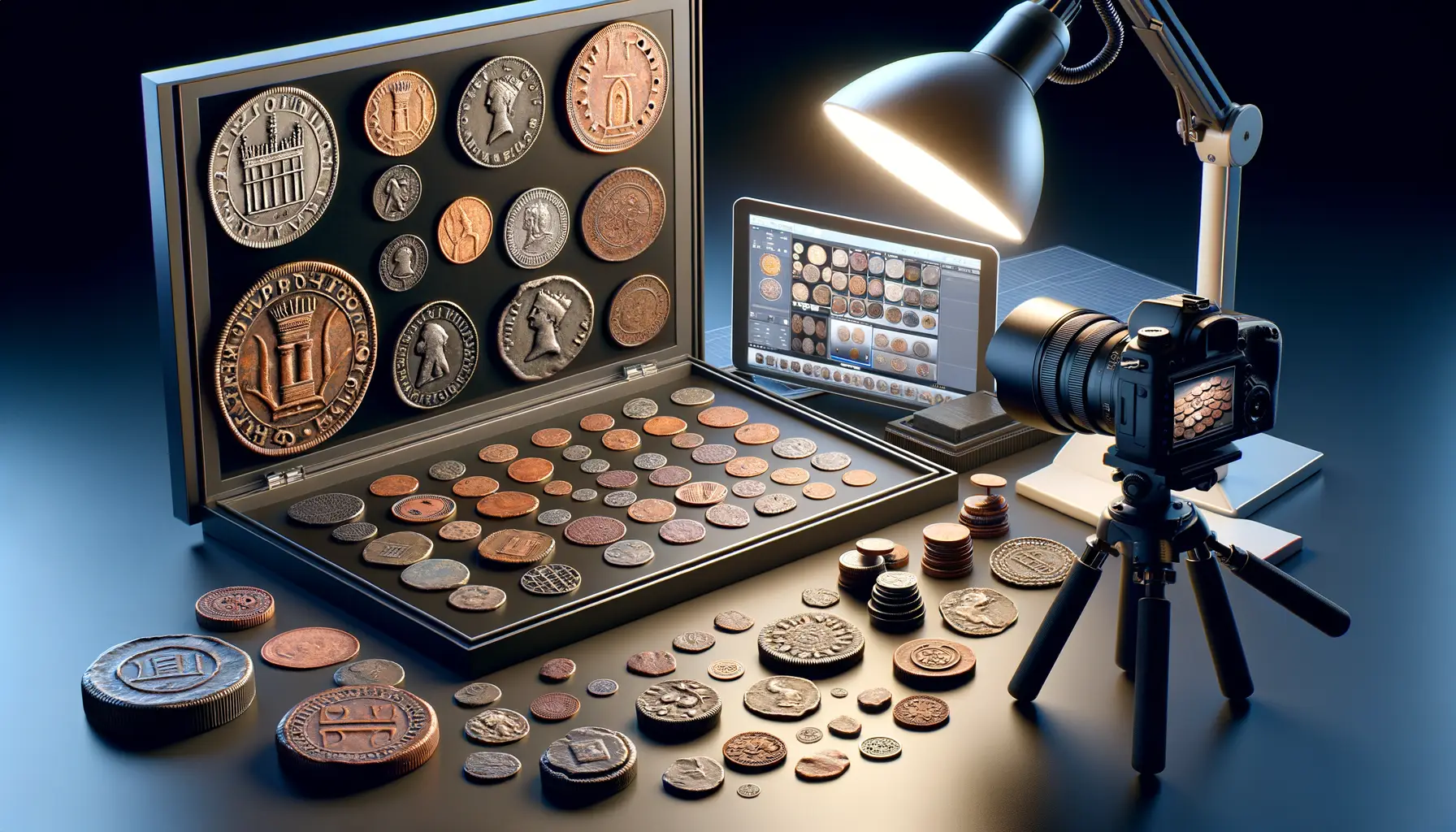
Lighting: The Unsung Hero of Coin Photography
Capturing coins isn’t just about clicking a button—it’s about dancing with light. The way you illuminate a coin can make or break your image. Proper lighting reveals every groove in the design, from intricate mint marks to delicate surface textures. Always aim for soft, diffused lighting, as harsh shadows can obscure important details. A simple hack? Use a white lampshade or even a translucent plastic sheet to diffuse direct light. And don’t forget to adjust the angle! Tilting your light source can expose hidden scratches or alterations that are key in authentication.
Mastering Focus and Frame
When it comes to coins, sharpness is the king of clarity. Autofocus on your camera might be tempting, but manual focus often delivers better results for small, detailed subjects like coins. Set your camera (or smartphone) to macro mode to capture close-up shots with all those fine features screaming out in high definition. Keep the frame tight—this isn’t an art project; you’re here to isolate the coin.
Try these tips to elevate your game:
- Use a tripod to eliminate any blur caused by shaky hands.
- Photograph both sides of the coin and its edge for a complete visual story.
- Experiment with different backgrounds—neutral tones like gray or black often work best to make the coin pop.
Trust me, the devil is in the details. A well-focused image could uncover a fake edge inscription or even forgery attempts invisible to the naked eye. It’s all about looking beyond what’s obvious and letting your lens do the talking.
Benefits of High-Quality Images in Detecting Counterfeit Coins
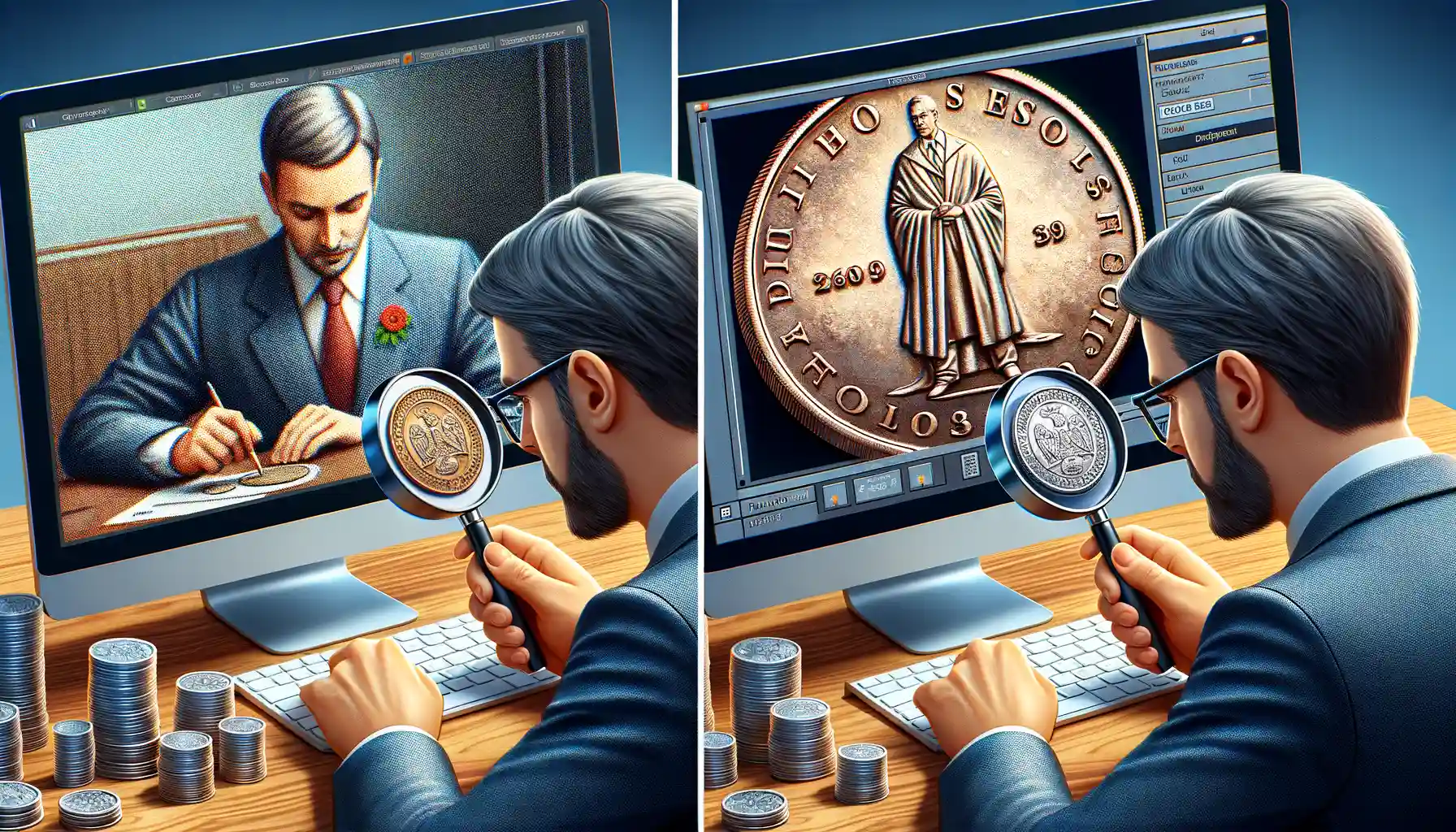
The Power of Crystal-Clear Coin Imagery
Ever tried deciphering a blurry image of a coin? It’s like looking through frosted glass—you know something’s there, but the details remain frustratingly out of reach. High-quality images solve this conundrum by offering a seat in the front row of clarity. With sharp, detailed photos, everything from minute scratches to intricate die imperfections becomes visible, making the difference between genuine and fake immediately apparent.
Collectors and experts often look for subtle signs such as raised edges, slight misalignments in lettering, or surface textures. Imagine zooming in on a rare gold coin, only to uncover that its “perfect” surface hides a poorly replicated mint mark. Those hidden details, invisible to the naked eye or in low-res photos, leap into focus with high-resolution photography—like clues revealed under a detective’s magnifying glass.
- Die markers: Unique production flaws or wear marks that authenticate coins.
- Surface luster: Telling the story of how a coin ages naturally versus artificial tampering.
- Edges: Revealing reeding inconsistencies common in counterfeit coins.
Preserving History and Trust
Think of a coin collection as a library of history, each piece narrating a specific moment in time. When a counterfeit sneaks in, it’s like inserting a fake page into a treasured book. High-quality images don’t just catch these imposters—they preserve the integrity of your collection.
Take, for example, an ancient Roman coin. A trained eye might pick up on altered patina in a photo, suggesting it’s been artificially aged. With the right tools (and outstanding photos), these tiny betrayals are impossible to hide. For collectors and dealers alike, trust is built on authenticity, and images serve as the ultimate guardians of truth.
Challenges in Using Photography for Coin Authentication
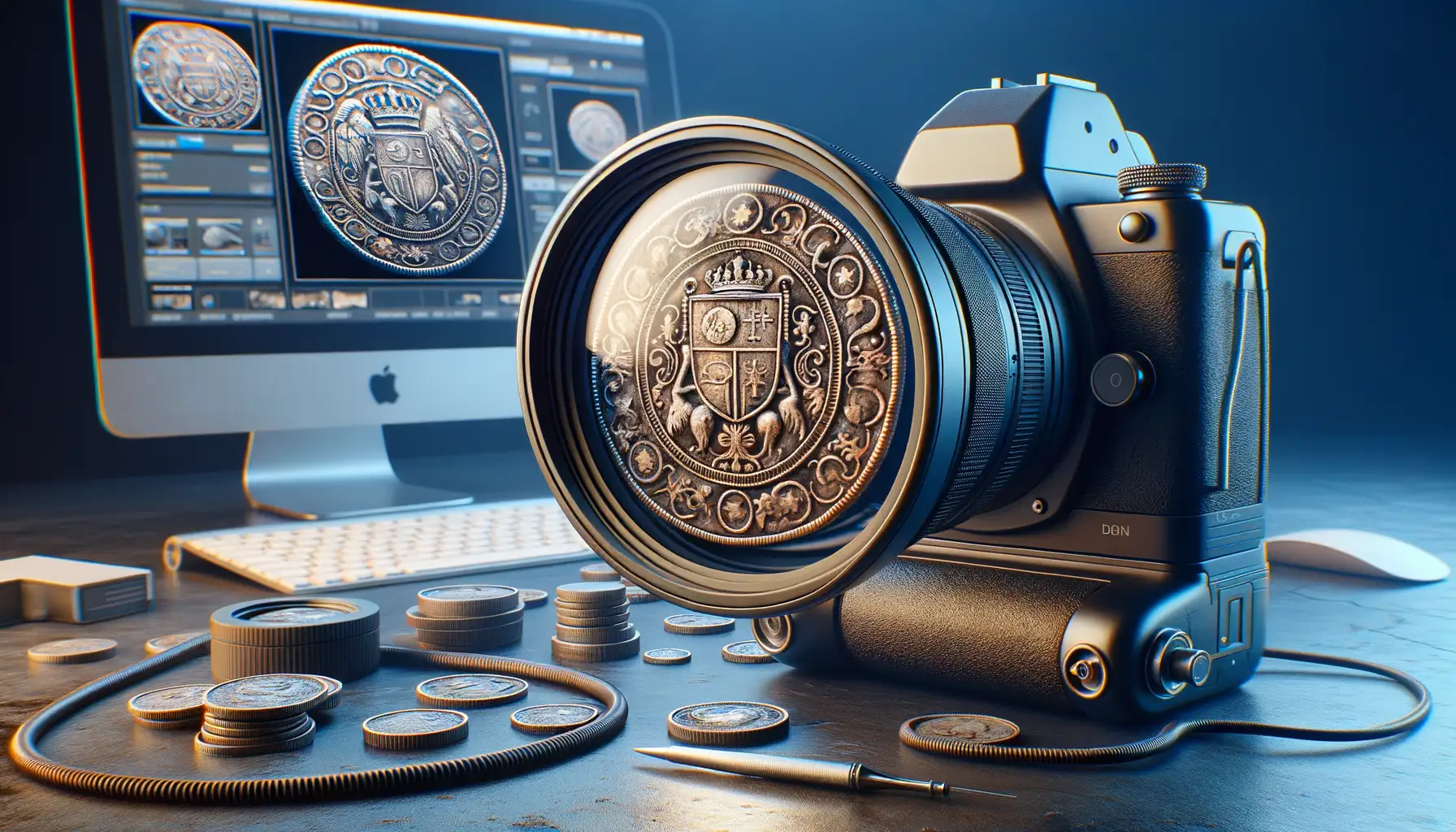
When Lighting and Shadows Play Tricks
Photography for coin authentication might seem straightforward—snap, analyze, done—but in practice, it’s anything but a walk in the park. One of the biggest hurdles? Lighting. A poorly lit photo can obscure crucial details like mint marks or surface textures. Too much light, and suddenly that naturally aged patina looks suspiciously shiny. Shadows can be equally treacherous, masking subtle engravings or scratches that are key to verifying authenticity. Imagine a 1922 no-D Lincoln cent under harsh light—missing the “D” could mean thousands of dollars lost… or mistakenly spent.
The Problem with Details That Won’t Sit Still
No two coins reflect light in the same way, thanks to their unique history: a scratch here, a smudge there. Capturing these elusive details can become an uphill battle. And then there’s the matter of resolution. Even the most advanced cameras can stumble when trying to capture microscopic details like die variations or hairlines on proofs. Low-quality images? Forget it. Blurry edges make a legitimate coin look fake, while overly enhanced photos may mislead.
To make things trickier:
- Camera settings require constant adjustment depending on the metal type—bronze reflects differently than nickel.
- Background colors can distort how hues appear (think about silver looking almost gold!).
Every image tells a story, but in coin authentication, even a misplaced period of lighting can rewrite the entire narrative.
Future Trends in Photography and Digital Tools for Coin Verification
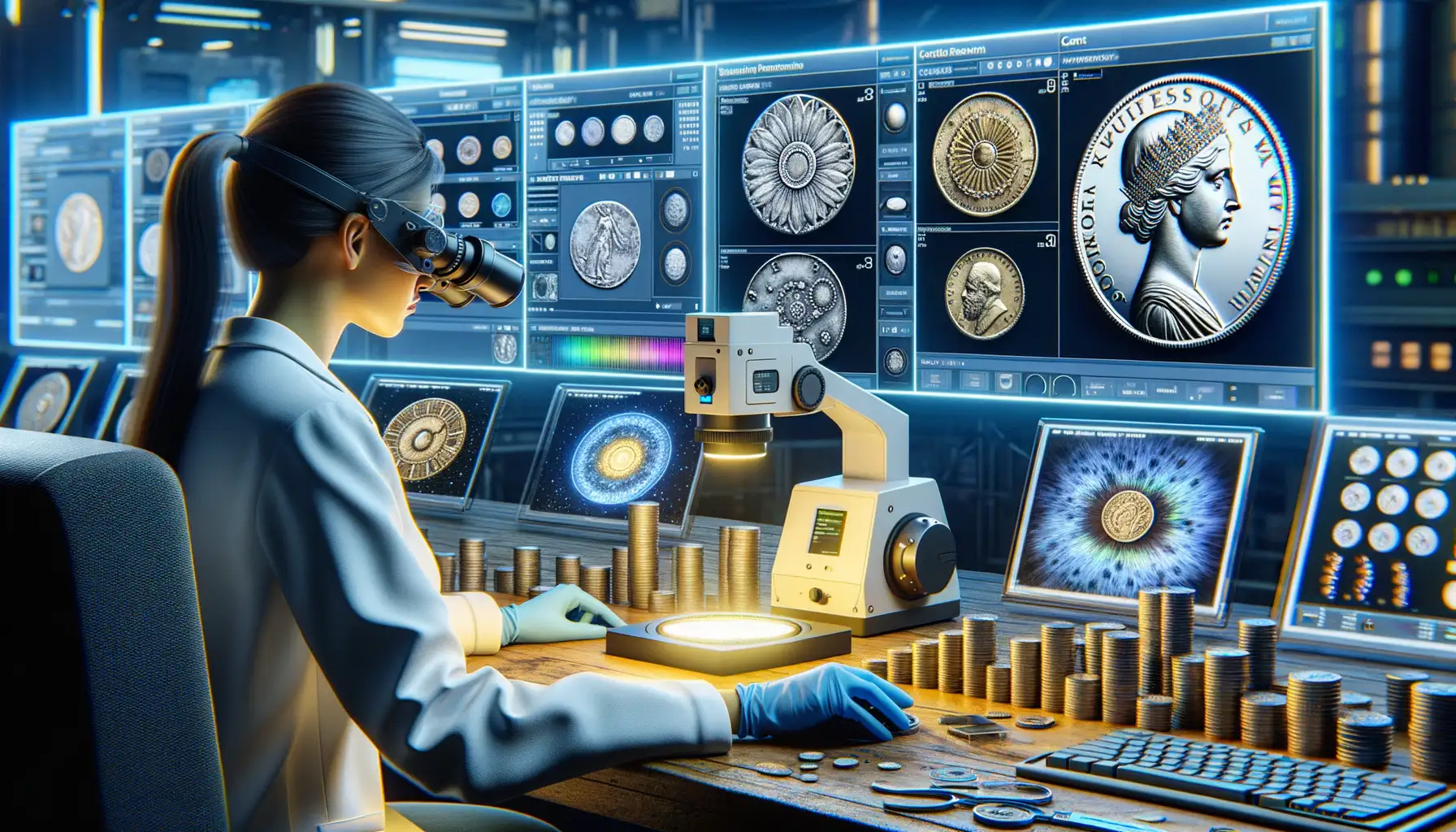
Embracing Tomorrow’s Tech: AI, Lenses, and Lighting
The future of coin verification is a thrilling convergence of art and science. Imagine holding an ancient coin in your hand, capturing its intricate details under perfect lighting, and having cutting-edge tools analyze its authenticity in seconds. That’s where we’re headed.
Artificial Intelligence is shaping up to be the secret weapon for coin experts. With pattern recognition tech and machine learning, AI tools can scrutinize thousands of coin images in milliseconds, spotting inconsistencies too small for the human eye. Think about those nearly invisible micro-scratches or tiny font discrepancies—AI sees them like a hawk.
On the other hand, camera advancements are flipping the script entirely. Soon, ultra-macro lenses and hyperspectral imaging will become the norm. These can capture coins down to their elemental composition! Don’t be surprised if your next DSLR or smartphone camera has a preset designed specifically for coins.
- Portable lighting kits with variable color temperatures are on their way, tailoring illumination to specific metal types.
- Even 3D scanning cameras will create virtual models of coins, enabling “hands-off” analysis for rare and fragile pieces.
What About Blockchain for Coin History?
Imagine scanning a coin, and within moments, a blockchain-powered database tells you its origin, previous owners, and even past auction prices. This isn’t science fiction—it’s the future unraveling before our eyes. With blockchain integration, every coin would come with a tamper-proof digital fingerprint, leaving no room for counterfeiters to wiggle in.
And let’s not overlook augmented reality (AR). Think of putting on AR glasses and seeing overlaid data appear next to your coin—mint marks, grading info, and even historical tidbits. It’s like translating an old language instantly. Exciting stuff, right?
It’s clear: photography and digital innovation aren’t just tools—they’re becoming storytellers, detectives, and guardians for numismatists worldwide.
